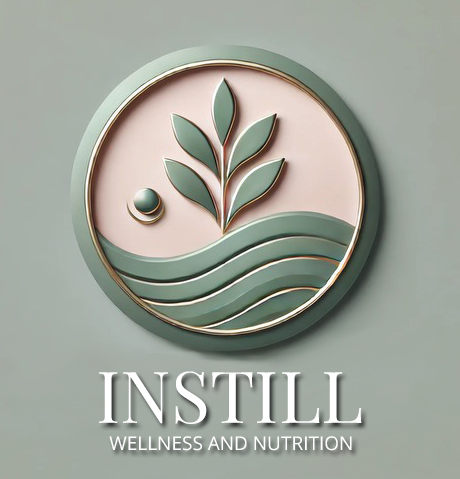Picture this: you’re wrapped in the warm glow of early morning sun, sipping your favorite brew, and feeling an inexplicable sense of calm wash over you. It’s not just your imagination – that golden light is nature’s own elixir, a powerful yet often overlooked tool for radiant health and blissful sleep. In our endless pursuit of wellness trends and life hacks, we’ve somehow missed one of the most accessible and potent remedies right outside our windows. I personally feel like something simple as daily sunlight exposure can make a much bigger impact than it gets credit for. Let’s peel back the curtains and dig into the magic of morning light.
The Science of Sunrise
Our bodies are exquisitely attuned to the natural world, with light playing a crucial role in regulating our internal clocks. When morning light hits our retinas, it triggers a cascade of biological processes that set the stage for the day ahead and prepare us for restful sleep at night.
Dr. Samer Hattar, a neuroscientist at the National Institute of Mental Health, explains, “Light is the most potent agent to synchronize your internal body clock that regulates circadian rhythms, which in turn also regulate energy balance, sleep soundness, appetite, and metabolism.”[1]
This synchronization is primarily driven by the suppression of melatonin, our sleep hormone, and the production of cortisol, which helps us feel alert and energized. But not all light is created equal – the blue wavelengths present in morning sunlight are particularly effective at this reset.[2]
The Sleep Connection
You might wonder how morning light exposure can impact your sleep quality hours later. The answer lies in the delicate balance of our circadian rhythms. By exposing yourself to bright light early in the day, you’re essentially setting a timer for when your body should start winding down.
A study published in the Journal of Clinical Sleep Medicine found that office workers who received more bright light exposure during the morning hours reported better sleep quality and less sleep disturbance.[3] This highlights the powerful connection between our daytime light exposure and nighttime rest.
Beyond Sleep: A Holistic Wellness Boost
The benefits of morning sunlight actually extend far beyond improved sleep. Research has shown that regular exposure to natural light can:
1. Boost mood and alleviate symptoms of depression[4]
2. Enhance cognitive function and productivity
3. Support healthy vitamin D production
4. Improve immune function
5. Regulate appetite and metabolism
Creating Your Sunrise Ritual
Integrating morning light exposure into your daily routine doesn’t have to be complicated. Here are some simple yet powerful ways to harness the dawn:
1. Rise with the sun: Set your alarm 15-30 minutes earlier and start your day with a gentle outdoor stroll.
2. Breakfast al fresco: Take your morning meal outside or near a sunny window.
3. Create mindful moments: Practice deep breathing or gentle yoga outdoors as the day begins.
4. Commute with intention: If possible, walk or bike part of your way to work, soaking in the morning rays.
5. Tech-free time: Replace morning screen time with outdoor activities to maximize light exposure.
Remember, consistency is key. Aim for at least 30-60 minutes of outdoor light exposure within the first hour of waking for optimal benefits.
A Natural Path to Radiant Health
In our modern world of artificial light and late-night screen time, reconnecting with the natural rhythms of light and darkness can feel revolutionary. By embracing the power of morning sunlight, we’re not just improving our sleep – we’re aligning ourselves with the wisdom of nature and unlocking our body’s innate potential for vibrant health.
As wellness pioneer Dr. Andrew Huberman notes, “Getting sunlight in your eyes first thing in the morning… is absolutely vital for mental and physical health.”[5] So tomorrow, as the first rays of sunlight peek over the horizon, step outside and bask in the glow of this ancient, potent medicine. Your body, mind, and spirit will thank you.
[1] Hattar, S. et al. (2002). Melanopsin-containing retinal ganglion cells: architecture, projections, and intrinsic photosensitivity. Science, 295(5557), 1065-1070.
[2] Cajochen, C. (2007). Alerting effects of light. Sleep Medicine Reviews, 11(6), 453-464.
[3] Boubekri, M. et al. (2014). Impact of Windows and Daylight Exposure on Overall Health and Sleep Quality of Office Workers: A Case-Control Pilot Study. Journal of Clinical Sleep Medicine, 10(6), 603-611.
[4] Lam, R. W. et al. (2006). The Can-SAD Study: A Randomized Controlled Trial of the Effectiveness of Light Therapy and Fluoxetine in Patients With Winter Seasonal Affective Disorder. American Journal of Psychiatry, 163(5), 805-812.
[5] Huberman, A. (2021). Toolkit for Sleep. Huberman Lab Podcast.


